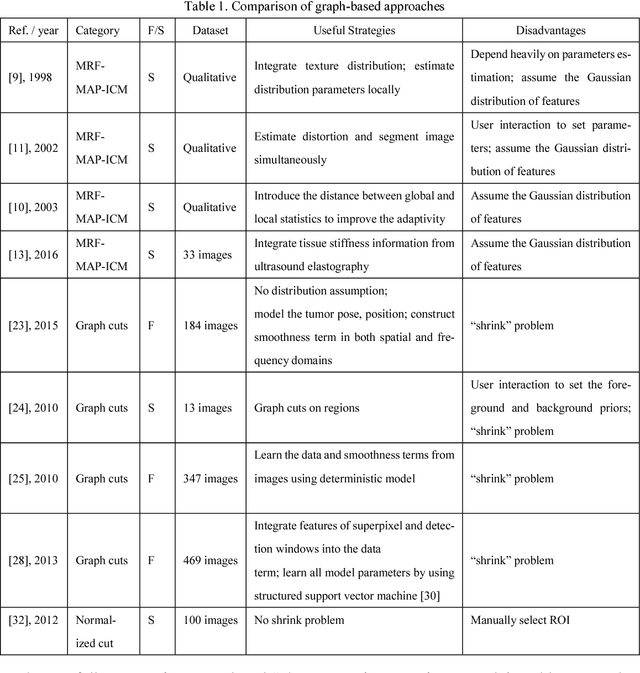Automatic Breast Ultrasound Image Segmentation: A Survey
Paper and Code
Jan 09, 2018



Breast cancer is one of the leading causes of cancer death among women worldwide. In clinical routine, automatic breast ultrasound (BUS) image segmentation is very challenging and essential for cancer diagnosis and treatment planning. Many BUS segmentation approaches have been studied in the last two decades, and have been proved to be effective on private datasets. Currently, the advancement of BUS image segmentation seems to meet its bottleneck. The improvement of the performance is increasingly challenging, and only few new approaches were published in the last several years. It is the time to look at the field by reviewing previous approaches comprehensively and to investigate the future directions. In this paper, we study the basic ideas, theories, pros and cons of the approaches, group them into categories, and extensively review each category in depth by discussing the principles, application issues, and advantages/disadvantages.
 Add to Chrome
Add to Chrome Add to Firefox
Add to Firefox Add to Edge
Add to Edge